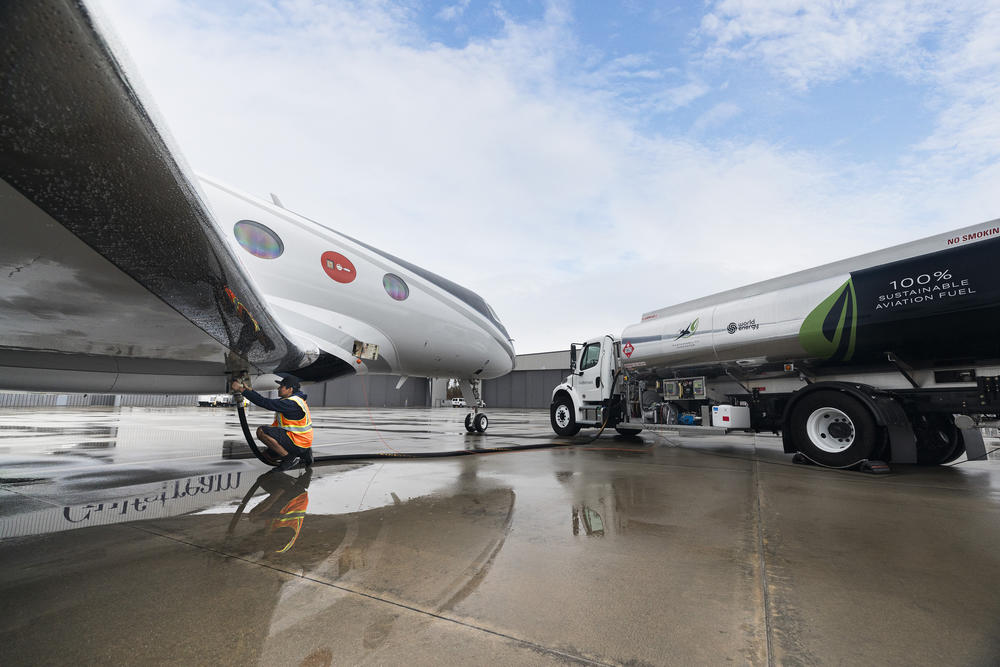
Caption
A Gulfstream G600 jet is fueled prior to departure for a historic test flight Sunday from Savannah to England using sustainable aviation fuel.
Credit: Gulfstream Aerospace Corporation
LISTEN: Gulfstream demonstrated sustainable aviation fuel's ability to complete long-distance flights, as it flew a business jet from Savannah to England. GPB's Benjamin Payne reports.

A Gulfstream G600 jet is fueled prior to departure for a historic test flight Sunday from Savannah to England using sustainable aviation fuel.
The world's first transatlantic flight powered entirely by sustainable jet fuel took off Sunday from the Savannah headquarters of business aircraft maker Gulfstream Aerospace Corporation, touching down southwest of London at England's Farnborough Airport.
Clocking in at 6 hours and 56 minutes, the flight took place on a twin-engine Gulfstream G600 airplane using a form of sustainable aviation fuel (SAF) derived from feedstocks and plant oils.
“One of the keys to reaching business aviation's long-term decarbonization goals is the broad use of SAF in place of fossil-based jet fuel,” Gulfstream president Mark Burns said in a statement. “The completion of this world-class flight helps to advance business aviation's overarching sustainability mission and create positive environmental impacts for future generations.”
The fuel has at least 70% lower lifecycle carbon dioxide emissions than conventional jet fuel, according to Gulfstream. “Lifecycle” refers to not only emissions from the flight itself, but also the energy needed to produce and transport the fuel.
To achieve net-zero carbon dioxide emissions from this flight, Gulfstream is purchasing a supply of SAF for use at Los Angeles International Airport, according to World Energy, the Boston-based company which made the fuel.
Gulfstream and its key suppliers plan to analyze data collected from the transatlantic flight to assess aircraft compatibility with future forms of SAF, particularly under the stress of cold temperatures and extended durations.
“With this flight, Gulfstream was willing to push the envelope to show what’s possible,” World Energy vice president of sustainability and digital supply chain Adam Klauber said in a statement. “They mobilized resources and personnel to demonstrate the future of sustainable aviation fuel.”
SAF is typically blended with conventional jet fuel rather than flying solo, comprising between 10% and 50% of the mixture when used.
Gulfstream narrowly beat Virgin Atlantic for the distinction of first 100% SAF-powered transatlantic flight, as the British airline is scheduled to embark on its own test flight Tuesday aboard a Boeing 787 Dreamliner from London's Heathrow Airport to New York's John F. Kennedy International Airport.